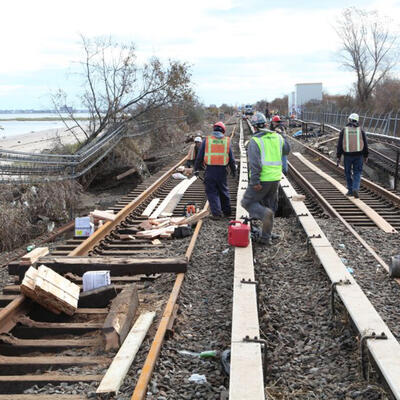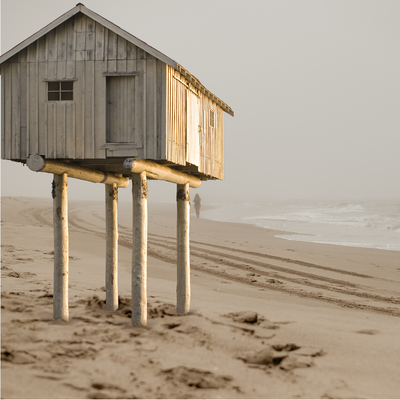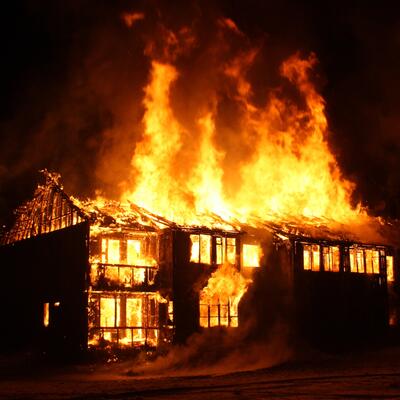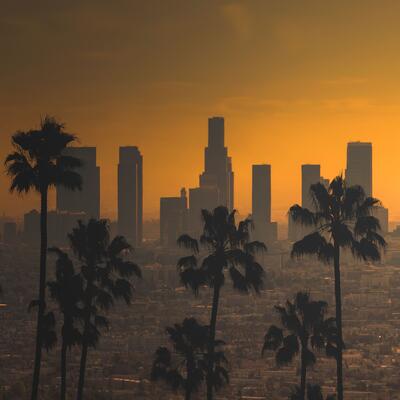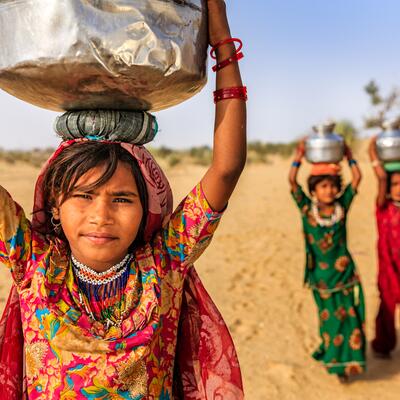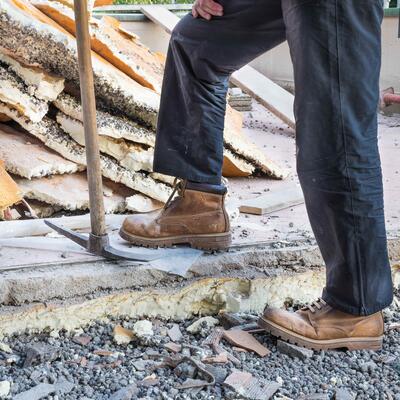
Disasterology: Navigating Fossil-Fueled Chaos
Guests
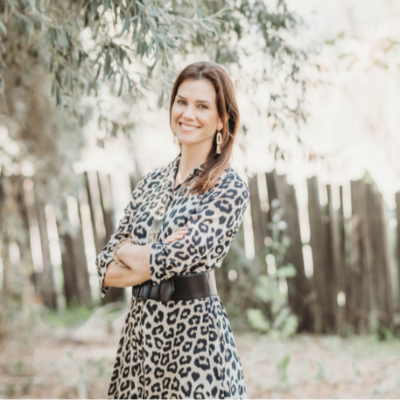
Adrienne Heinz
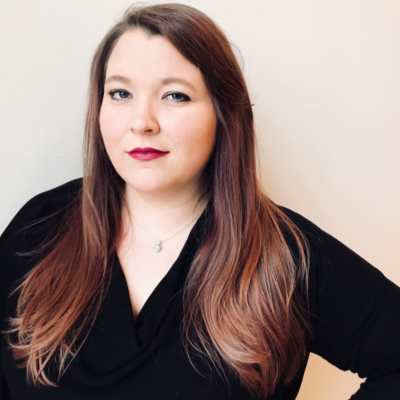
Samantha Montano
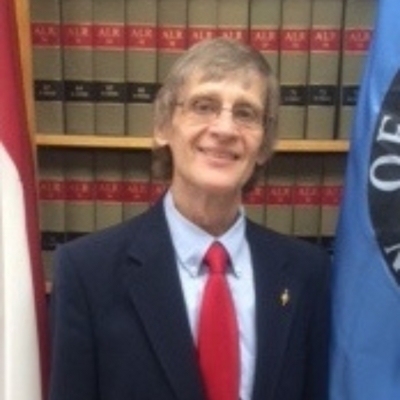
Ralph Hamlett
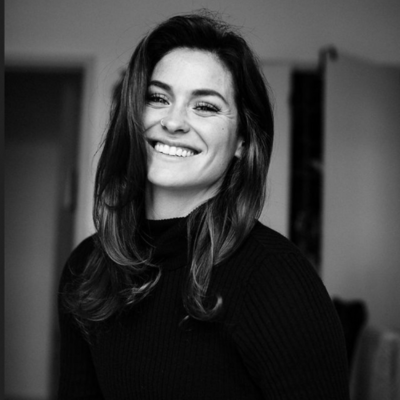
Haley Geller
Summary
There’s been a big increase in the number of billion-dollar disasters in the U.S. In just the last five years, those events have killed more than 2,500 people and caused damages costing nearly $150 billion per year. Scientists have made clear that climate change is increasing the frequency of some types of extreme weather that lead to these major disasters.
When disasters happen, most people expect the Federal Emergency Management Agency, FEMA, to come in and pick up the tab. But it can be hard to get those funds, and they’re often insufficient for full recovery. There’s also been reporting in recent years about how a disproportionate amount of FEMA’s payouts go to white and wealthy Americans. Recently, as part of his initiative to cut the size of government, President Trump threatened to scrap the agency entirely.
Samantha Montano has a doctorate in Emergency Management and is the author of Disasterology: Dispatches from The Frontlines of The Climate Crisis. She says in spite of FEMA’s flaws, eliminating the agency would do more harm than good.
“The loss of FEMA would … first be realized through the loss of funding for everything from response and recovery efforts, to preparedness efforts ahead of time and to mitigation,” Montano says. “And some of that financial loss would need to be made up by the states. I don't think it would be possible for many states to make up that funding, so you're looking at going without those programs and without preparedness efforts and going without mitigation efforts and going without fully recovering communities.”
In addition to funding, FEMA serves a critical role in coordinating disaster response from other federal agencies and provides wide-ranging expertise that many state officials lack. In short, “eliminating FEMA would lead to chaos, really, across the country next time we had a disaster,” Montano says.
Surviving a disaster of any kind is difficult, painful, and traumatic. And increasingly, many communities find themselves subject to repeat disasters as global warming intensifies extreme weather.
“It hijacked our sense of safety and violated our expectations for how things were supposed to be. And that really, at a certain level, produced existential dread and uncertainty that was hard to grapple with,” says Adrienne Heinz, a clinical research psychologist at Stanford who lived through several wildfires including the Tubbs Fire in 2017.
Long after the news cameras have moved on, people are still dealing with the physical and mental recovery for a very long time. And disaster trauma can have serious ramifications for the community if left unprocessed.
“We don't want our legacy to be PTSD and alcoholism, domestic violence, divorce, string relationships, childhood adversity. We want to move the needle towards resilience and recovery, and we have to provide mental health support to do that,” Heinz says.
After the fires in her community, she worked with several partners to create a multifaceted approach to support locals. That included creating teen programs, training clergy, nurses and teachers on how to deliver skills for psychological recovery, and a mental health app called Sonoma Rises. Providing mental health care for people after disasters can change the trajectory of their recovery, she says.
“It's not just about debris removal and bioremediation and getting that house back. It's also about healing the whole person.”
Episode Highlights
2:00 – Ralph Hamlett shares his story of surviving Tropical Storm Fred
19:30 – Haley Geller shares her story of surviving Pasadena fire
26:25 – Adrienne Heinz on the science of trauma
28:00 – Grounding techniques
31:00 – Ways to respond to and help disaster survivors
35:00 – Multipronged approach to supporting community health after Sonoma fires
43:00 – What the loss of FEMA would mean for disaster response and recovery
47:00 – Need to invest in local emergency management staff and training
57:30 – Why you should bring your neighbors a basket of muffins
Resources From This Episode (1)
Full Transcript
Note: Transcripts are generated using a combination of automated software and human transcribers and may contain errors. Please check the actual audio before quoting it.
Ariana Brocious: I’m Ariana Brocious.
Kousha Navidar: I’m Kousha Navidar.
Ariana Brocious: And this is Climate One.
[music change]
Ariana Brocious: There’s been a big increase in the number of billion-dollar disasters in the U.S. In just the last five years, those events have killed more than 2,500 people and caused damages costing nearly $150 billion per year. Scientists have made clear that climate change is increasing the frequency of some types of extreme weather that lead to these major disasters.
Kousha Navidar: And we know we’re in for more severe disasters, especially since we aren’t cutting emissions at the rate we need to. There are actually people who study disasters and our response to them. Ariana, you interviewed a “disasterologist,” right?
Ariana Brocious: Yeah, Samantha Montano – she literally wrote a book called “Disasterology.” We’ll hear my conversation with her a bit later on in the show. When we were coming up with this episode, part of what we wanted to highlight is that long after the news cameras have moved on from a disaster, people are still dealing with the recovery, physically and mentally for a very long time.
Kousha Navidar: Yeah. Providing mental health care for people after disasters is critical – it can really change the trajectory of their recovery.
Ariana Brocious: You know, this week’s show is a bit of a tough one. It’s hard to hear about people's stories of loss and trauma. But honestly if I were in a disaster, “natural” or otherwise, I don't know what I would do first. So for me, hearing these stories has helped make me feel a little bit more prepared.
Kousha Navidar: The truth is, even if you’ve been fortunate enough NOT to have lived through a major disaster, we all probably know someone who has.
Ariana Brocious: Ralph Hamlett knows what it’s like to live through a disaster. A few of them, in fact. He’s a retired professor and alderman in the town of Canton, North Carolina. He was born and raised there, and has lived there most of his life, close to the Pigeon River. The town sits more than 300 miles inland from the Atlantic coast. And growing up, he says he took comfort in that.
Ralph Hamlett: In grammar school, I was told, as other students were told, the mountains protect us from hurricanes, from tropical storms. And I lived with that understanding. If you can call it that, up until 2004, when we were hit with Hurricane Francis, and then two weeks later, Hurricane Ivan. And it dispelled that myth somewhat, but many people said, well, this was a fluke storm. It wouldn't happen again. But since I experienced, it every time a hard rain came, I had this sense in my soul that it could happen again, as it did with Hurricane Fred.
Ariana Brocious: And he was right. In 2021, when he saw the forecasts for Tropical Storm Fred, Hamlett was keeping an eye on things. But events moved much faster than he expected.
Ralph Hamlett: I was with my daughter, who had just graduated from Montclair University up in New Jersey. And we were doing what fathers and daughters do. We were watching Lord of the Rings for about the thousandth time, and I'd popped some popcorn and we were keeping track. As a matter of fact, we walked the 500 feet, if it's that much, to the river to see how it was doing. And it wasn't rising. It was stable. We saw patches of blue. The weather forecast said clear skies were coming and there would be a break in the rain. So, we kept watching what the storm was doing while we kept watching Lord of the Rings and we went out the last time, and I heard the gurgling of runoff, you've heard a percolator or a coffee pot making coffee, and that sound when it gets to the bottom, that was the sound, but magnified. And I said, we've got to leave. AndI went to move my car out of my garage. I was going to move it to an elevated place. By the time I had gone down the steps towards my car, The car resembled the Titanic.
Ariana Brocious: Wow.
Ralph Hamlett: It upended and I barely made it back into my house. It was that quick.
Ariana Brocious: The water just showed up. The water just came.
Ralph Hamlett: Yes, it did. And, uh, from the gurgling in, in the, in the front to my walking through the house to the back door, down some steps, the car was gone. That quick.
Ariana Brocious: Wow.
Ralph Hamlett: So, my, my daughter screamed because our basement steps fell through and there was this ungodly crash of things in my basement. Just being shattered and we very quickly moved our pets to the second story and we were evacuating and my daughter had a friend who also was in college and my mother had passed and we were going to allow her to live in my mother's home and she was stranded. This was her first day in that home and she was stranded because she had lost her cat. And we heard the young lady who was next door, screaming.
Ariana Brocious: The Mayor of Canton, who Hamlett knows and works with as a city council member, had been checking on his sister, who lived nearby. He called Hamlett to confirm he had evacuated; when he hadn’t, Mayor Smathers rushed to help.
Ralph Hamlett: And the mayor was probably 40 to 50 feet in the opposite direction from the river. So he yelled at me basically saying Hamlett, what are you doing? And I think, I said, I'm doing the best I can. And the mayor forged through the water. I think he would resemble probably Moses splitting the Red Sea, with no thought to his own safety. And he helped all of us get to dry land.
Ariana Brocious: That's amazing. Uh, heroism in, in all of us, right? So, the flood was three and a half years ago. I can't imagine where you even begin. Frankly, when something like that happens when you've just sort of lost everything so quickly But since you've had this this time, where are you now in the paperwork? You know, insurance payout any of that process.
Ralph Hamlett: It's very interesting that you asked that question, Ariana, because yesterday I received a notice from the town of Canton. And it is a notice that my house is in need of repair. And it says my home is uninhabitable, and I must make repairs to bring it in compliance with our ordinances. Or face fines and penalties. And if I don't make these repairs, then, the home will be destroyed, and it tells me how much I've got to elevate the house. But it does go on to say, doing all this is more than the house could ever be.
Ariana Brocious: The cost of repairs is more than the value of the house. So you're an alderman. You are on the city council in Canton. Was this letter a surprise to you? Are you one of the people who set the ordinances that it's referring to?
Ralph Hamlett: Well, I believe this came before my time. Well, I'm sure of it. After Hurricanes Ivan and Francis. So it was set because we had to go through it before. But it's a reminder that my home has been sitting there and nothing has been done. And nothing has been done cause I'm waiting for FEMA, for the state and some assistance to give me direction on what I should and must do.
Ariana Brocious: And so this is three and a half years later. You're saying that nothing's been done to the house in terms of, even demolition or, I mean, it's, it's in the, it's in the condition it was immediately post flooding, right?
Ralph Hamlett: Uh, no, not in the condition it was. Since that time, we had Hurricane Helene.
Ariana Brocious: Ah,
Ralph Hamlett: I remember when Helene was forecast, we had a sense it was going to be bad. And, I had a board meeting that night, on Thursday. Helene happened Thursday night, Friday morning. We called the board meeting early because we needed to make preparations. And I went by my house, as I have done quite a bit. And in those last moments, I thought, much of this I won't see again. Much of the home I grew up in, my parents house, much of it I wouldn't see again. And I was right. The next day, the floodwaters were over the roof of one of the properties
Ariana Brocious: Wow.
Ralph Hamlett: And up to the second story in my house, my home. A house is more than a house. It's a home. It has permanence. It has memories of, uh, holidays. Uh, it has memories of people who have passed because they're connected to that house, that home. I was raised next door. And when I went away to college and subsequently graduate school. I knew no matter what, I could always return home. And there's something final in saying you can't. It's beyond the pale of the word sad. It's an excruciating pain that I see now in the glazed eyes of people who have gone through it for the first time, while for me, with Fred, it was the third time, if I count Frances and Ivan as two. And then, with Helene. Because the house is still standing, but we can't go in.
Ariana Brocious: It must be incredibly hard to navigate the loss of that, of those two properties, your house, your mother's house, and simultaneously be helping the community, the larger community in your role on city council and so how, because it wasn't just your house that was damaged, the police station, the fire department, town hall, all destroyed. So what has the rebuilding looked like in Canton, beyond your own house?
Ralph Hamlett: It has been an ongoing challenge that our town has been faced with, as we tried to have some kind of semblance of order and to provide services to the citizens. That they're paying taxes for and you know away from the river, maybe it's hard to understand. Because people want their garbage picked up. They want potholes to be filled. They want police there, firefighters there. But the toll it took on all of our workers, and it's still taking on our workers, as they provide the necessary services for people, services that they deserve and rightfully expect. So the challenge has not stopped, since Fred, and I've been in so many closed sessions, with the board, have one on Thursday night, still talking about this, the aftermath. As a matter of fact, our last board meeting two weeks ago, we talked about structures that we would have to tear down. And there's a sadness there. Did you have a theater that you would go to as a little girl? Yeah. And you remember that theater? Well, our theater was a historic building, which dated back to the 30s. And it had beautiful murals in it. A very nice space. But the board was hit with the choice. Did we tear it down, or did we leave it empty? And I voted to leave it empty, but let it stand until better times come. And maybe mitigate. So if another flood happens, it would be safe, but we are, the board is faced with those kinds of decisions of what we are willing to knock down, and that's a hard choice. And once it's gone, it's gone because if you tear down a structure in a floodplain, you cannot rebuild it.
Ariana Brocious: I see, for flood, at insurance or for zoning reasons, you can't rebuild.
Ralph Hamlett: FEMA, if you take FEMA money
Ariana Brocious: FEMA.
Ralph Hamlett: And you tear it down, it's gone.
Ariana Brocious: Canton is about 30 minutes west of Asheville, North Carolina, you're fairly inland. You're not on the coast. and earlier you said growing up thinking the mountains would protect us from things like tropical storms hitting the coast. And yet there's been this increasing occurrence of storms. And so when you look back on the 2021 flood, what do you wish you had known that could help someone in the future?
Ralph Hamlett: I think we know it. I think I know it. I wish I had a stronger voice to say it. And what I know is climate change. That's what I know. That was the realization that came from 2004. And then it was accented by Fred, by Helene. We know this. I know this. And yet, unfortunately, many people won't hear the voice. And it's troubling. I heard today that three out of ten people go to church. I'm living in the Bible Belt. And another story that I was told in my youth, As I got older, I heard it. That men can't do anything to God's creation because it's perfect. Climate change is a hoax because God would not allow men to do this. And I think if there is a God, she's probably saying You're supposed to be stewards. Why aren't you doing your job? So, what could I do differently? Well, at board meetings, I'm constantly reminding people about climate change. And just a small voice at a board meeting, many people don't even know is happening, but maybe my small voice and maybe the small voices of others will one day resonate and people will. We'll say, it's about time, right? It's past time. And, I'm encouraged by programs such as yours, that people may once and for all listen, and take those hard steps which are necessary if we're to survive as a species, let alone other species.
Ariana Brocious: That's a wonderful point to end on. Dr. Ralph Hamlet is an alderman in the town of Canton, North Carolina, and Professor Emeritus of Political Communications at Brevard College. Thank you so much for joining us on Climate One.
Ralph Hamlett: Thank you very much for having me.
Kousha Navidar: Coming up, supporting communities in processing the trauma of disasters.
Adrienne Heinz: We don't want our legacy to be PTSD and alcoholism, domestic violence, divorce, string relationships, childhood adversity. We want to move the needle towards resilience and recovery, and we have to provide mental health support to do that.
Kousha Navidar: That’s up next, on Climate One.
Ariana Brocious: Help others find our show by leaving us a review or rating. Thanks for your support!
Kousha Navidar: This is Climate One. The January fires in Los Angeles came swift and sudden, leaving destruction across many parts of the city. But for those affected, once the fires were put out, and the skies cleared, the challenges of navigating the aftermath continued. Haley Geller was at her home in Pasadena with her husband and their two-month old son the night the fires started.
Haley Geller: My name is Haley Geller. I am a 37 year old new mother living in Pasadena with my husband and my new son. We moved to Pasadena to this lovely little neighborhood called Daisy Villa in May of 2024 when I was actually still pregnant and we rented this adorable little house. And we met all of our neighbors and it was really sweet and wonderful to live there until about January 7th of 2025 when we were all at home and the wind was just so scary, howling like crazy outside.
And this house that we rented is pretty old. So you know, our windows were rattling. The door actually blew open to our laundry room, our outdoor sofa flew across the yard. It was really, really scary. Just the wind was really scary. And so we were already thinking that maybe we might want to leave. Maybe we want to go to my sister's house in Santa Monica.
Maybe it was better there, um, but we decided to hunker down and, you know, it's scary, but we're inside and it's fine. Around maybe like six. No, I think maybe around 7 PM. I walked outside to get something from the car. Um and I was I was being blown right and left. It was crazy and as I walk up to the car, I look up.
We're right at the base of the these beautiful foothills of Eaton Canyon. We live on Eaton Drive and I look up at our foothills and right at the transmission, the Edison transmission power lines, there was a fire. So we saw it really, really early. I ran back inside. I told my husband, there is a fire. We got to pack up and go now.
And so we pretty frantically threw a whole bunch of stuff in suitcases. And by the time we were done with that, our house was already filled with smoke. You know, my baby is just now three months old. He was two months old at the time,
Kousha Navidar: Geller and her young family went to stay with a friend 25 miles away. But even that was too smoky. So they went to relatives in Las Vegas – 260 miles away. But her husband still had to go to work.
Haley Geller: He works at a gym in Pasadena, and it blew my mind, but they were still. open. So he was expected to go to work and our son had a doctor's appointment. So we came back for a moment, still did not feel safe in our house. We did peek in and it was a mess.
I mean, there was, there was tons of ash covering all that whole outside, but then also tons had come in under the door and poured in through every window and poured into the attic vent that we have into our kitchen. It was disgusting and it was super, super smoky. So we came up to my parents house in Berkeley and then January turned into February and I realized even though the fires are contained, they're no longer burning, cleanups have started.
I don't feel comfortable going back to that house, especially with my very young newborn baby. We gave notice to our landlord and then my husband has been packing up our house all of February and we are gonna stay in Berkeley. I guess until we figure out our next steps.
I think we're still existing in kind of a survival mode. We just, I mean, we just got reunited yesterday. Last night was the first time I saw my husband since, I think, January 24th. And the first time he's seen his, you know, very new baby in three weeks. It's kind of. It's unimaginable.
As survivors of climate disasters go or climate refugees, it feels almost dramatic calling us that, but this was definitely a climate disaster and we definitely no longer have our home. We're very, very privileged that we have another safe place to stay. We have family and we were able to get money from FEMA that that process was really easy for us, but we do no longer have a home and we have a newborn and we're trying to figure all of that out. And it's really, really stressful and really, really chaotic.
Kousha Navidar: Simply surviving a disaster like a flood or a fire or a hurricane is one thing – keeping you and yours safe, finding immediate and longer-term shelter, and so forth. But there’s also a huge mental piece to recovery. Adrienne Heinz is a clinical research psychologist at Stanford School of Medicine. Much of her work has been with veterans on post-traumatic stress disorder. Then, in 2017, the Tubbs fire tore through her Northern California community – and she found herself needing to recover from a traumatic event.
Adrienne Heinz: Basically there was a massive firestorm that was a series of fires, not just one, but in the area where I live, it started in Calistoga and had hurricane force winds that pushed it through to urban communities that would never imagine burning. We didn't have just one mega fire. We had several. So one happened in 2017, but then we had the 2019 Kincaid fire followed by the 2020 Walbridge fire. And it hijacked our sense of safety and violated our expectations for how things were supposed to be. And that and that really at a certain level produced existential dread and uncertainty that was hard to grapple with.
Kousha Navidar: Yeah, and for you as somebody who had worked with veterans and PTSD for you, suddenly you're trying to take what you learned and put it into a new framework, right?
Adrienne Heinz: Yeah, exactly. And trauma, you know, the science of trauma and how we know it affects our brains and our bodies and our behavior does generalize and in many ways when you're in disaster, similar to being in combat, so there are phases of disaster as there are phases of recovery from trauma and we have to integrate it our, hearts and our our collective well being to get back on our feet. It's not just about debris removal and bioremediation and getting that house back. It's also about healing the whole person.
Kousha Navidar: How easy was it for you to get through the trauma? What worked for you?
Adrienne Heinz: Frozen peas.
Kousha Navidar: As a source of nutrition or what was it with frozen peas for the shelf life?
Adrienne Heinz: That's been my life hack for, for, for a lot of tumultuous times. So a lot of grounding techniques help you feel safe in the moment. And so for example, I keep a bag of frozen peas in the freezer and I put them on my face when the world starts spinning and there's chaos and I can't quite find my North Star and I don't know the next best step because you're deciding between two not great outcomes and other techniques like five, four, three, two, one. What are five things that you see, four things that you feel, three things that you hear, two things that you smell and one nice thing about yourself. So really just centering you in the moment. Kids are also helpful because they are fully present, especially the little ones. And yeah, you, you, you have to be immersed in the moment with them.
Kousha Navidar: I love that the frozen peas I mean the ground at first that's how you're talking about eating them and then but you know a cool pack on your face that idea of grounding yourself I think is so universally can be appreciated in a lot of different situations. It also makes me think about the LA fires right now, which you're engaging with through your work, but also through your personal life. I mean, I understand that you're, you've been personally supporting family and friends who lost their homes in the recent LA fires. And at first, I'm, I'm so sorry to hear that. As somebody who is supporting others, what do you say to someone who just lost everything, almost everything has that sense of security stolen from them?
Adrienne Heinz: Yeah. Well, thank you for acknowledging kind of how it's affected my personal life. You know, my husband's Aunt Annabel lost her home in Altadena. She was an artist and lost her studio and her livelihood. And then another good friend lost her childhood home, but was fortunate enough to be there that night so she could evacuate her elderly parents.
And so I've kind of seen firsthand their reactions and it's triggered a lot of me like in my bones. I feel all those stages of what we went through here and I didn't even lose my home. You know, I have what they call that comparative suffering that, you know, because I didn't, you know, have this level of loss that I'm not entitled to these feelings and emotions. And I found that utterly unhelpful. But with regard to the LA piece and what we're doing there. We're just trying to let them know they're not alone. And we're planting seeds of hope and sharing, you know, other communities have been through this. We've made mistakes, but we've also learned so much. And while there's no blueprint ready, you know, custom for you, there are so many people that want to share as a way of healing. And it's part of post traumatic wisdom, being able to pay it forward to other people in this same club of grief and loss. And I want to answer the second part of your question, which is, what do you say?
Kousha Navidar: Yeah, it's a tough one.
Adrienne Heinz: Right. So often, I think about it is similar to grief. Like when someone passes away, there are things you don't want to say, like at least, or everything happens for a reason because that's minimizing and invalidating. And it doesn't allow someone to have their experience. And so what I've been saying to the people in my network who've been affected, you know, my personal network, but also professional, is I'm so deeply sorry for what has happened. There aren't really words to describe my sorrow and how much I care and want to support you through this. I don't expect any type of response, but please know I have your back. I'm going to check in on you. I'm going to see if you want a gift card to DoorDash this day. I'm going to send you a bag of clothes that I know are going to fit you because we used to share them in college. I'm going to probably come down and watch your kid for a couple days so that you can go get a massage or take care of insurance. It's whatever you want to do, but they're going to be with someone who loves them and, and, and knows them. And so the, concrete actionable form of support, cause just saying, Oh, let me know how I can help. You put the onus on the survivor to figure out. How to, to how, how the help they need when it's a time of overwhelm.
Kousha Navidar: You know, you and I have talked once before and you mentioned something that has also stuck with me, which was the three H's. Do you remember that?
Adrienne Heinz: Sure do. I use it in my household all the time. So when someone's going through it, when they're, when they're catching feelings and just on, on the struggle bus, which is me oftentimes doing this line of work is, you know, we say, do you want to be helped, hugged, or heard? And they're very different types of support, as you can imagine.
Kousha Navidar: Yeah, and you're allowing the other person to tell them what they need versus presupposing, which was, I think, part of what stuck with me when you first said it. When it comes to surviving a disaster, how are some ways that trauma often shows up for people?
Adrienne Heinz: So oftentimes in the immediate aftermath of a disaster like we saw in LA, you, uh, see people who are struggling to sleep. Often nightmares are very common, feeling on edge, high levels of irritability, kind of reliving. different moments of the experience, depending on how close you were to the impact. There might be an uptick in drinking or using substances to cope, and then strain on relationships. And also for caregivers and parents, there's an extra layer of how do you put on your own oxygen mask, so that you can take care of the people that you love. And just getting some psychoeducation about what to expect after. A disaster is really helpful for normalizing, destigmatizing and letting people know, like, here's some guardrails.
Kousha Navidar: Yeah.So for you in your head right now, when you're thinking about the LA fires, for instance, and you're thinking about blueprints or frameworks or even just lessons you've learned from past experiences with disaster, what are lessons that you think of?
Adrienne Heinz: Well, let me start with my community because I live in it and know it best and can tell you a little bit of our story of how we responded and rose to meet the moment. So in that aftermath of feeling helpless and unsure, but recognizing that mental health professionals do have a skill set to support people through climate disasters. A group of local stakeholders from, you know, hospitals, schools, healthcare foundations, nonprofits. came together and said, Hey, we don't want our legacy to be PTSD and alcoholism, domestic violence, divorce, string relationships, childhood adversity, uh, you know, academic, languishing. We want to move the needle towards resilience and recovery, and we have to provide mental health support to do that. This has been a mass traumatization and if you're human, you're, you're going to need even light touches. So light touches is support ranging to, you know, therapy. There's a whole spectrum of care. And so we got together and held several sessions over pizza after work hours, and we designed the Sonoma Wildfire Mental Health Collaborative. And we rolled out a multi pronged approach to supporting community health because there's no one size fits all, everybody has different needs. So the first was, a mental health app called Sonoma Rises and that had a lot of support around coping with grief and loss, irritability, transitions, problem solving, self care, and had special content for teens because teens were disproportionately affected by having their schools damaged and also losing their homes.
And we had that in Spanish as well. And then we also train the workforce. How do we get people in our workforce in shape to help folks through this mass traumatization? So we trained therapists and also paraprofessionals like clergy and nurses and teachers and how to deliver skills for psychological recovery. Which is an evidence informed protocol for getting people back on their feet in the months to years after disaster. And then finally, we introduced a mind-body connection, that was an option for people who weren't ready to talk but who wanted community and saw some benefit to doing something physical.
So we trained over 60 yoga teachers in trauma informed yoga and restorative practices that help, restore balance to the nervous system and take us from fight or flight to rest and digest. And that synchronous movement with other people can also be, a form of, of healing. And so with those three pieces in mind, we put them to action, and we learned what worked, what flopped, and then we, you know, we hope to share some of that.
Kousha Navidar: what was the ease of actually getting folks to use these? Did you feel like if you built it, they came?
Adrienne Heinz: We quickly learned that disaster survivors are very busy people with a lot of competing priorities. They have a mile long to do list, even though they know taking care of themselves is important, it does get deprioritized. And it's critical to meet people where they are. If you're expecting them to come into a brick and mortar facility to participate in therapy, that's a tall order. Very few people are capable of that. Especially in the months after the disaster when there's just so much going on and they have to figure out basics like housing and insurance. It is hard to get these public health tools out. Not everybody will use them, but I think having a public mental health safety net after disaster is critical for recovery because just educating people about what to expect can go so far. And then having resources that are convenient and accessible. That's everything.
Kousha Navidar: I guess a piece of it that keeps popping into my mind with what you're describing with connecting people to resources is disadvantaged communities. I imagine it's hard for people who, uh, are. within those communities to, to have enough time, resources, anything to find what, what they need.
Adrienne Heinz: Yeah, we're, we're like in the same ocean but different boats. Some people have yachts, other people have, have canoes and, and some in between. And it's critical to meet these vulnerable populations where they are and integrating care into places that are convenient where they already have to go. So I've seen success in making home visits, you know, getting mobile clinics to just go to folks homes and, and places where, you know, they are, are sheltering. That's very effective. In addition, integrating into like primary care, having mental health support and resources available because people will go in for back pain or headaches and other stress responses, but maybe not for their mental health. And then in addition, getting into the schools because these are places in the community where teachers know exactly what students need to recover. They're seeing the challenges and they're also seeing the facilitators of what's helping, what's hurting.
Kousha Navidar: Yeah. I'm thinking about the full spectrum of experiences you've had in this, in this realm, this, like, very difficult realm, you've worked for years with veterans. Now working with survivors of disaster, in general for yourself, even, you know, 2017 and, and the megafires since then in your own life, has all of that changed the way you have seen and think about resilience?
Adrienne Heinz: It has. And it's restored in me so much hope and energy and faith in our ability to, to rise up from adversity and reclaim some post traumatic growth and wisdom from it, that even through most, the most horrible and devastating of circumstances, we can come together and emerge stronger, better versions of ourselves and of our communities. I've worked obviously in my home community in the Sonoma County area, but also Lahaina, now supporting LA survivors and one resounding theme is that there are emergent leaders who gather influence and use their voices to advocate for the needs of their communities and introduce new ways of being and then preparing for future disasters. So that's an encouraging piece. And other lessons I've learned, especially from, you know, deploying to Maui and seeing just the aloha spirit, one of community and the thinking about principles of Ina, like the, of the land and the reciprocity we have with it and using the land for, for healing and to bring back community connection. There are lessons we can learn from one another and each disaster, even though they're different, about our shared humanity and what we're capable of doing, in the face of trauma.
Kousha Navidar: Dr. Adrienne Heinz is a clinical research psychologist at Stanford University School of Medicine. Adrienne, thanks so much for hanging out with us.
Adrienne Heinz: Thank you for addressing this important issue, and I'm wishing you strength and hope.
Kousha Navidar: Likewise. Thank you.
Ariana Brocious: Many communities only have a part-time emergency manager. Coming up, why we need to build more local emergency management expertise:
Samantha Montano: To actually prepare for possible disasters and to actually work on minimizing our risk and trying to prevent those disasters from happening. That is a full time job. It's more than a full time job in a lot of places.
Ariana Brocious: That’s up next, when Climate One continues.
This is Climate One. I’m Ariana Brocious.
Kousha Navidar: And I’m Kousha Navidar.
Ariana Brocious: When disasters happen, most people expect the Federal Emergency Management Agency, FEMA, to come in and pick up the tab. But FEMA is not without problems.
Kousha Navidar: Right. It can be hard to get those funds, and they’re often insufficient for full recovery. There’s also been reporting in recent years about how a disproportionate amount of FEMA’s payouts go to white and wealthy Americans.
Ariana Brocious: Recently, as part of his initiative to cut the size of government, President Trump has threatened to scrap the agency entirely.
Samantha Montano has a doctorate in Emergency Management and is the author of Disasterology: Dispatches from The Frontlines of The Climate Crisis. She says in spite of FEMA’s flaws, eliminating the agency would do more harm than good.
Samantha Montano: We have had some kind of federal function of emergency management, depending on how you measure it, you know, dating back to the 1930s. So the loss of FEMA would, I think for most people, first be realized through the loss of funding for everything from response and recovery efforts, to preparedness efforts ahead of time and to mitigation. So money going towards preventing disasters from happening in every single state across the country. And some of that financial loss would need to be made up by the state, and I don't think it would be possible for many states to make up that funding, so you're looking at going without those programs and without preparedness efforts and going without mitigation efforts and going without fully recovering communities.
There's also kind of like another issue here, and that is the role that FEMA plays in coordinating responses, right? They aren't only writing checks. They're also coordinating what happens, among the other federal agencies, right? Like the very definition of disaster involves the community being overwhelmed and needing outside resources. And for many of our disasters, they overwhelm an entire state. if you think of just like Helene recently, right, you have this multi state response that has to happen. If every single governor was completely on their own to manage that, there's no way, right? You need a mechanism higher than the state level to help coordinate that. That has to come from the federal government so the immediate effect on any kind of major response, in the country would be significant, and including loss of life, because you don't have those coordinating systems in place.
The third kind of bucket here, which is the expertise that is held within FEMA, right? You know, I'm from Maine, for example, and we do not get disasters very frequently, and they've tended to be, you know, knock on wood, on the smaller side of things. And so within the state of Maine, yeah, we have people who do emergency management. We have some emergency management expertise, but it's nowhere near what Florida has or what California has. And so for a state like Maine, to be able to turn to FEMA for that extra expertise is invaluable. So those are kind of like the big ways that eliminating FEMA would lead to chaos, really, across the country next time we had a disaster.
Ariana Brocious: Yeah. And they're happening with increased frequency as we're seeing more of these climate shocks, you know, the kind of warming writ large, having multiplier effects on things that are occurring in our regular weather cycles. So there are lots of stories of FEMA's shortcomings of the agency paying out disproportionate amounts to people after disasters. Is there any truth to the claim that FEMA is just broken?
Samantha Montano: Look, the reason that I got into emergency management was because I thought FEMA was not working. So I am fully on board with the idea that there need to be changes within FEMA. I wrote an entire book about it. Like I study it everyday. I advocate for it publicly and have for the past, like, 15 years or so. So, yes, there does need to be changes within FEMA. I do not believe that FEMA is fundamentally broken and unfixable. So, for me, this idea of just eliminating it, that doesn't solve the problems that I've identified in my work, like not meeting survivors needs, inequitable spending of recovery dollars. Those things are not fixed by eliminating FEMA. Those are actually made worse by eliminating FEMA.
Ariana Brocious: Yeah. One of your recommendations is to spend a lot more at the local level to fund local emergency management. So if that were to happen, if, if cities and states, you know, prioritize this, where would that money go? How would it be spent to bolster the local emergency management staff and, and knowledge?
Samantha Montano: Yeah, so right now across the country, we have a real diversity in terms of kind of size of emergency management agencies, right? You have someplace like New York City, who's usually around 200 employees, all the way down to these small rural towns who have a volunteer emergency manager, usually like a retired fire guy or a veteran who is just kind of filling in. And then you have kind of everything in between. But when you look at the kind of average, most or almost most of the country is living under a part time emergency manager. So not even one full position responsible for emergency management in their community. And that just isn't realistic given our current risk across the country with climate change and changes in like cyber security risk and like, you know, all of these other interconnected systems that we have, like our risk is increasing in these kind of like multiple interconnected ways. And in order to spend the time that is needed to actually prepare for possible disasters and to actually work on minimizing our risk and trying to prevent those disasters from happening, that is a full time job. It's more than a full time job in a lot of places. We always say disasters begin and end locally. So that local level is often kind of most and what that looks like is increasing budgets, right? So that you can hire more people, you can afford to hire people who have the expertise that is needed for those roles. You need money for resources and, you know, running community outreach programs to get more people represented in planning processes that requires funding and support to do that. There's a lot up in the air about FEMA right now and about emergency management, but one thing that we can still say for sure is that we need to be growing the capacity of our local emergency management systems.
Ariana Brocious: And that could happen independent of FEMA. Even though there is, you know, a role for federal funding and federal support, it could still happen.
Samantha Montano: Yeah, absolutely. I mean, right now it depends on where you are in the country. Many local emergency managers are funded through a preparedness grant that's located within FEMA. That's absolutely doing a lot of work at holding up our local and state emergency management system right now. There's a lot of concerns and has been for years about what would happen if that grant went away. I think we're definitely back in that place of worrying about that. But there are many, many, many local communities across this country who do have the money that they could put that towards growing their local emergency management and making sure that they have more security, and protection in terms of changes that may, may be made to federal funding.
Ariana Brocious: In the Shock Doctrine, Naomi Klein discusses this concept of disaster capitalism. And so, you know, this looks like a lot of things, but corporations, private interests capitalize on the chaos of disaster for their own profit. This can look like deregulation or buying, redeveloping them, displacing people. You know, there's concern after the fires in Los Angeles of this perhaps happening in the historically black community of Altadena. So are there policies in place to prevent that from happening or is it just, I don't know, an open market?
Samantha Montano: Yeah, it's a good question. So there can be protections against that, right, if there's like local zoning laws, I do think it is quite difficult to do with the kind of general lack of education about disasters and recovery among many local officials, local politicians kind of broadly. And there's a lot of conflicts of interest, right, in local government here. So, for example, we know that developers are, one of the groups that tends to fund local politicians, and that creates all kinds of conflicts of interest after a disaster, right, because developers want to come in, they want to make all these changes and even if the community's against it, it's hard to push back because the politician needs that money for their next election campaign, right? So you have this kind of dynamic happening often at the local level that doesn't necessarily make it easy to put those protections in place. I would also say that if you have any kind of major pullback from FEMA federal funding, you're looking at a situation where state and locals are going to become dramatically overwhelmed by all of the work that needs to be done, and we'll have even fewer resources, right? And we know that when that happens, the holistic approach to recovery that we like to think we're taking starts to fall apart really quickly. And the, the focus tends to be on how can we just rebuild as quickly as possible without accounting for community needs or accounting for, building sustainably or, you know, any of those “extras” that ideally would happen in recovery.
Ariana Brocious: Yeah. You're touching on so many things there. And we had a recent episode, actually right after the Los Angeles wildfires and talk to someone who's very familiar with disaster recovery and talked about how difficult it is to do any kind of changes really immediately following that really the time for that is is ahead of the disasters because at the time after everybody just wants to go home. So it sounds like local community organizing is really imperative to kind of pre planning and being able to better respond after disaster. How can we create a more disaster literate public?
Samantha Montano: Yeah, One of the things that I would really advocate for is, developing more disaster curriculum at the K through 12 level, right? We already do this for some things. So like, for example, you've probably had your fire department come and teach, like, stop, drop, and roll, right? But there is so much more that we could be teaching, in terms of like, you know, why disasters happen, how we respond to them, how we prevent them, starting young, right? And there's other countries that do that, right, where there is a greater kind of culture of understanding disasters and understanding, you know, what, each person's role is in responding to those. We also have a need to really invest in emergency management higher education programs across the country. So we have a shockingly few number of PhD programs, for example, across the country. There are a number of undergrad programs, but, there's all kinds of ways that we need to build those programs and, and make them, more standard and kind of better across the country. This is like, in some ways, this is playing the long game, right? These are the people then that you want going into these emergency management positions across the country. And then there needs to be better communication and education with the general public, right? It can be tough to, like, find good and reliable information about disasters when they're happening, certainly before and after. And so that's a kind of a situation where you need to build out disaster journalism and build out clear pathways of communication between emergency management and the public.
Ariana Brocious: Yeah. You know, I was thinking about this almost in as a parallel, like voting and how much communication I as a citizen receive about my polling place, like where is the place that I'm supposed to go? When are the essential dates that I have to prepare? I have to submit my registration. I have to do this and that, you know, and we have mail ballots when, where do those go? And thinking about what could a parallel effort look like that, for example, I live in Southern Arizona in the event of a heat emergency. You know, here's your cooling center. Here are the resources, you know, just a similar kind of preparation that makes it more common knowledge.
Samantha Montano: Yeah, that's the thing, right? Like emergency managers are planning for all of these different hazards, all these different scenarios all the time, but the public often does not know what those plans are or where to even find information about those plans, right? So that is, and that is even like kind of the most basic thing about emergency management that you would want the public to know. And we don't know it. One thing I'll add, too, is that most people that I encountered don't know anything about their local emergency management agency. So for listeners, do you know who your local emergency manager is? Do you have a local emergency manager? Do you know how to find them and seek information out from them in a crisis? Another fun thing you can do, and I say fun sarcastically, is go look up your town's budget and see how much money they are putting towards your emergency management agency, if you have one. And unless you're in New York City, I think you're going to be pretty shocked at how little is being spent, especially when you compare that to other things in that local budget. When you consider the kind of stakes that we have in terms of having a well established emergency management agency in your community.
Ariana Brocious: Yeah, yeah. Okay, homework for people. We know there are things people can do. We've heard more about this course in the wake of some of these fires and hurricanes of have a go bag, you know, sort of plan ahead, know what's in your house in the event that you lose your house and your possessions, but you've also said one of the best ways to start preparing for an emergency is to bring your neighbors a basket of muffins. Why is that?
Samantha Montano: Yeah, so this is another little saying we have an emergency management, right? Getting to know your neighbors is really critical. In a disaster, you are more likely to be rescued by somebody you know, whether that's family or friends. As compared to, you know, a formal search and rescue team, and the reason for that is because when a disaster happens, we don't just sit around waiting for help to arrive, we all spring to action, and so, you know, if you're in an earthquake and your house falls in on you, it's gonna be your friends and your family and your neighbors who know that you were home and are buried under there, right, and can get to you most quickly, building that social network around you, whether that's your neighbors or your, you know, your colleagues or your friends or your family is a really critical element of emergency management across all the phases.
Ariana Brocious: Samantha Montano is author of Disasterology: Dispatches from the Frontlines of the Climate Crisis coming out in paperback on March 4th. Samantha, thank you so much for joining us on Climate One.
Samantha Montano: Yeah, thank you for having me.
Kousha Navidar: And that’s our show. Thanks for listening. Talking about climate can be hard, and exciting and interesting — and it’s critical to address the transitions we need to make in all parts of society. Please help us get people talking more about climate by giving us a rating or review. You can do it right now on your device. Or consider joining us on Patreon and supporting the show that way.
Ariana Brocious: Climate One is a production of the Commonwealth Club. Our team includes Greg Dalton, Brad Marshland, Jenny Park, Austin Colón, Megan Biscieglia, and Ben Testani. Our theme music is by George Young. I’m Ariana Brocious, thanks for listening.
